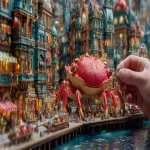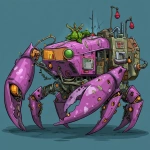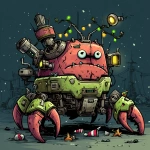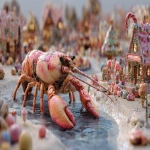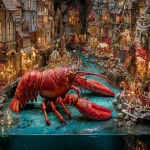Explore the Best AI Image Gallery

Navigating the Landscape of AI Image Creation Tools
The rapid advancement of artificial intelligence (AI) has ushered in a new era for various industries, none more visibly than in the realm of visual arts. AI image creation tools, once a novelty, have become essential assets for artists, designers, marketers, and many more. These tools can generate stunning images, assist in creative processes, and even facilitate novel forms of expression. However, with their rise, we must also consider the implications—both positive and negative—of these technologies.
The Impact of AI on the Creative Industry
AI image creation tools are transforming the traditional creative process. Artists now have the ability to harness machine learning algorithms to generate artworks that range from photorealistic images to abstract designs. This democratization of art creation means that individuals without formal artistic training can still produce captivating visuals.
For example, platforms like Artbreeder allow users to merge existing images to create unique compositions, fostering a sense of collaboration among artists and non-artists alike. Such tools expand the notion of authorship, as images are often created from multiple input sources, highlighting the importance of shared creativity.
Potential Uses Across Various Industries
AI image generators boast a range of applications:
- Marketing and Advertising: Brands are utilizing AI-generated images to create eye-catching campaigns. Tools like DeepArt enable companies to customize visuals that resonate with target audiences, thanks to the automated generation of tailored images.
- Gaming and Immersive Experiences: Game developers are increasingly relying on AI to create realistic environments and characters. The procedural generation of assets can drastically reduce production time while still elevating the gaming experience.
- Fashion and Design: Designers use AI to envision new styles and patterns, exploring combinations that human creativity might overlook. Tools like RunwayML facilitate innovative textile designs that can quickly adapt to changing trends.
- Social Media: Influencers and content creators employ AI-generated images to craft their online presence, producing visuals that stand out in crowded platforms.
Ethical Considerations
As with any technological advancement, the rise of AI image creation tools invites a slew of ethical concerns. Issues of copyright, ownership, and attribution come to the forefront. When an AI generates an image using existing works, it raises the question: who owns that image? Does the credit go to the developer of the AI, the user who provided prompts, or the original artists whose works contributed to the AI's training?
Furthermore, there's the potential for misuse. AI tools can produce misleading or harmful content, such as deepfakes or culturally insensitive images. This opens the door to serious consequences, including misinformation and cultural appropriation. It becomes imperative for users and developers alike to approach these tools with a strong ethical framework.
Future Trends in AI Image Generation
Looking ahead, the future of AI image creation tools appears promising. As technology advances, we can expect:
- Increased Customization: Future tools will likely allow for even more customization, enabling users to specify intricate details of the images they wish to generate.
- Enhanced Collaboration: Collaboration between humans and AI is set to deepen, leading to a fusion of styles and ideas that neither could achieve alone.
- Integration of Virtual Reality (VR) and Augmented Reality (AR): The integration of AI-generated imagery in VR and AR experiences will revolutionize how audiences interact with visual art, making them active participants rather than passive observers.
- Regulatory Frameworks: As concerns over ethical issues grow, we anticipate the establishment of clear governance and guidelines surrounding the use of AI image generation.
In conclusion, AI image creation tools are reshaping the creative landscape, presenting myriad opportunities for innovation while simultaneously posing significant ethical challenges. As the technology evolves, it is essential that we remain vigilant and responsible, ensuring that the human touch in creativity remains central to the artistry we cherish.
